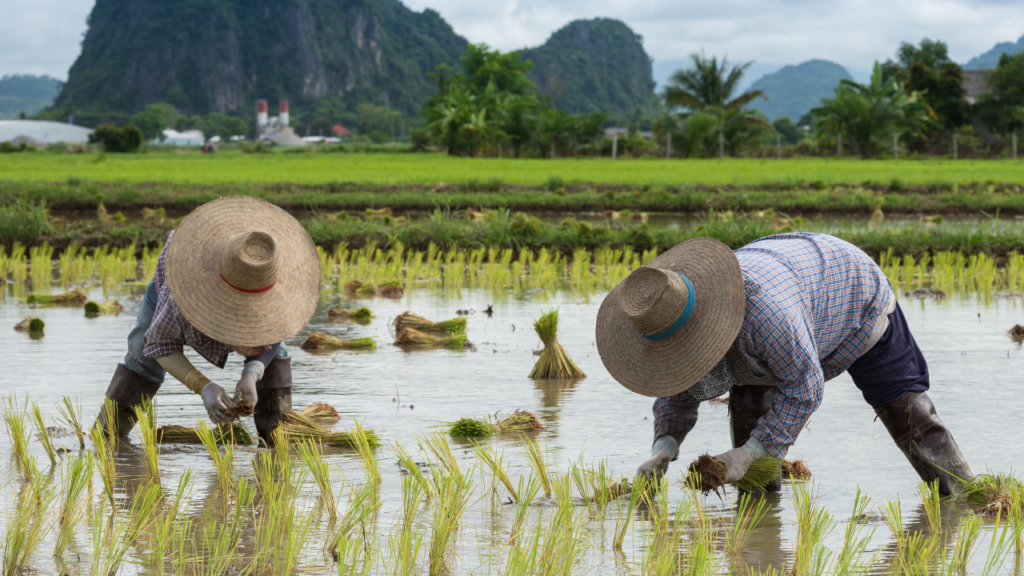
Farmers working on rice field. | file photo
CEBU CITY — Crop production in Central Visayas has declined by P4.7 billion last year or 16.9 percent to P23.246 billion, the Philippine Statistics Authority in Central Visayas (PSA-7) reported.
According to the data presented by PSA-7 chief statistical specialist Leopoldo Alfanta, Jr., the value of crop production in Region 7 dropped from P27.967 billion posted in 2021, based on the 2022 Performance of Agriculture and Fisheries released last December 4.
Value of crop production
In terms of value of crop production by commodity, palay recorded the highest atP5.152 billion, followed by sugarcane atP4.08 billion, mango with P3.48 billion value, banana at P2.4 billion, and coconut at P2.34 billion.
Meanwhile, the corn production was valued at P1.63 billion, cacao at P6 million, and coffee at only P3 million which also ranked the lowest in crop production.
Among over 20 crops, only cabbage (9.4 percent), string beans (3.2 percent), and ampalaya (0.7 percent) showed positive growth rate in terms of the crop production value by commodity in 2022.
Meanwhile, palay, corn, and sugarcane declined by 16.3 percent, 9.5 percent, and 13.4 percent, respectively.
On the other hand, Alfanta said that in terms of volume of crop production by commodity, sugarcane topped the list among over 20 crops with 2.26 million metric tons, followed by coconut with 0.3 million metric tons, and palay with 0.24 million metric tons.
CV posts biggest decline
Central Visayas recorded the “biggest decline” among the 16 regions in the Philippines in terms of value of crop production.
Bicol Region posted the highest positive growth rate in crop production with 2.6 percent in, followed by Cagayan Valley with 1.7 percent, then Northern Mindanao with 1.2 percent, and Ilocos Region with 1 percent growth. Only these four regions recorded a positive growth in crop production value.
Courtesy of PSA-7
Typhoon Odette impact
Leo Pelletero, project evaluation officer of the Department of Agriculture in Central Visayas (DA-7), explained that the region’s dismal farm output can be attributed to the impact of Typhoon Odette in 2021.
“Calamities like typhoon [Odette] that was experienced [in] late 2021, that’s why the production of crops was heavily affected considering that our farmers were still recovering,” Pelletero said.
He added that different high value crops in highland and lowland vegetable crops were especially affected particularly cacao and mango.
“That’s why the Department of Agriculture right now has a close correlation and collaboration with the LGU in allocating enough budget for the recovery for making some strategies in order to increase, to boost the income of our farmers. It’s a major aim of the Department of Agriculture,” he said.
Pelletero was present during the event to give insights and explanation on the results of the 2022 agriculture performance.
In 2022, Pelletero said that DA had allocated P1.2 billion budget and was increased to P2.1 billion in 2023. Next year, DA’s budget will increase to P2.7 billion, of which 40 percent will go to FMR (farm-to-market road) projects. With this, he said that they are positive of better results moving forward.
And while the farmers are still recovering, he said that DA has encouraged them to venture into climate-resilient agriculture so that they can somehow adjust when there are calamities in the future.
Aging farmers
According to Pelletero, there are over 655,000 registered farmers in Central Visayas as of 2023. Most of them are aging farmers.
Both the PSA-7 and DA-7 encouraged the young ones to enroll in agriculture-related programs because it offers a lot of enterprising activities and opportunities.
For his part, Alfanta acknowledged that there are no longer regions in the country that are “predominantly agricultural.”
“Ang atong regional economy, and of course, the national economy is really driven not by agriculture because we do not get much share of the economy from agriculture. Siguro, ang atoa lang for sustainability but we are more on a services-driven economy,” Alfanta said.
He added that this can also be a challenge to the policy makers on how to make agriculture become a relevant occupation to the new and younger generation.
“It has also been noted that our agricultural areas over the years have also been decreasing. What used to be our agriculture fields or plantation has been converted to roads and other establishments like housing,” Alfanta said in mixed Cebuano ang English. /clorenciana
READ MORE: DA-7 taking steps to ease effects to agriculture of coming El Niño